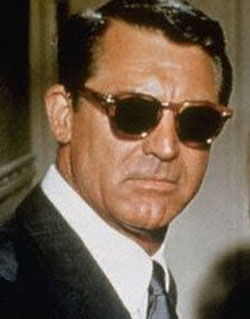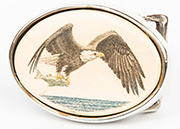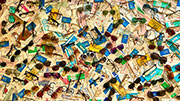Ask the MB: Couple of Questions About Sunglasses

The first question is on lens color. Back in 2001 or so I had a pair of Oakley with a reflective, metallic-blue lens coating. Looking back on it, I wonder if (brand aside) they were a rather toolbaggy thing to buy (my only excuse being that I was 16 at the time). Although I am not considering going that path again, I wonder -- is it ever acceptable for an MB to wear any color other than black/tan lenses or do the other colors (ie. red, blue, green) not conform to the principle of understatement?
The second question is hopefully simple. I know you have already quite reluctantly defined a few lightweight sunglasses (i.e. Serengeti Vedi, Rudy Project Murphy, Maui Jim Kailua and, yes, even Oakley Nanowires) as acceptable for use while performing activities such as jogging. Is it acceptable to don those types of eyewear for everyday use or are they strictly application specific like most activewear? With my facial structure I find "fashion" sunglasses tend to look odd and I would rather continue without than pay for prescription sunglasses just so I can look like a TB whenever the sun is shining.
--Adam
A: First of all, we'll cut you a little slack for the metallic-blue reflector Oakleys. You were only 16, preoccupied with acne, masturbation, and trying to find a prom date. Sunglass lens color was not a top priority at the time.
You've sort of answered Part I: The classic sunglass lens colors -- grey (some people call this black), brown, bottle green and grey/green (aka G15) -- are a good way to go for everyday use. They're cosmetically acceptable and functionally have endured the test of time. Here's an excerpt from eyetopics.com on the various functions of lens colors:
GrayNow for Part II: Don't you usually change out of your New Balance running shoes before going to dinner? There are better understated sunglass choices for everyday use than sport shades. If TTH (Trying Too Hard) fashion sunglasses make you feel self-conscious (and hopefully they do), try classic, ophthalmic styles from mid-20th Century (see our sunglasses channel for examples). Too often, guys today, even well-dressed guys, have only one pair of sunglasses or several pairs of sports sunglasses. Ironically, when men get dressed, they make sure their outfit works together and is appropriate for whatever function they're attending. Then they put on our only pair of sunglasses and get into the only car they own (or lease) -- the two weak links in how most men are showing up.
Gray sunglass lenses reduce light intensity without altering the color of objects. Thus, they provide the most natural color vision. Gray is the most popular sunglass lens color in the United States.
Brown
Brown lenses enhance contrast by blocking a larger percentage of blue light than gray lenses do. Brown lenses provide a warmer appearance to colors and make greens more vibrant.
Green
Green sunglass lenses provide a cool, soothing tone to colors. Though not as popular as gray or brown lenses, green lenses are often used to create the classic look of aviator-style sunglasses (Ed. note: "Green" today is actually grey/green or G15. You may want to consider bottle green popular during the 1950s/60s).
Amber
Amber sunglass lenses block all or nearly all blue light for superior contrast. Amber-colored lenses are frequently referred to as "blue blocker" lenses or "shooter's sunglasses." (Amber-colored lenses are popular among hunters because they provide enhanced contrast when looking at birds and clay targets against the sky.) Though these lenses enhance contrast, they also distort colors and may not be suitable for driving and other activities that require accurate color recognition.
Pink, Orange, Rose and Blue
These and other vibrant colors are available for fashion sunglasses. These lens colors can cause severe color distortion and are unsuitable for driving and other tasks when color recognition is important.







